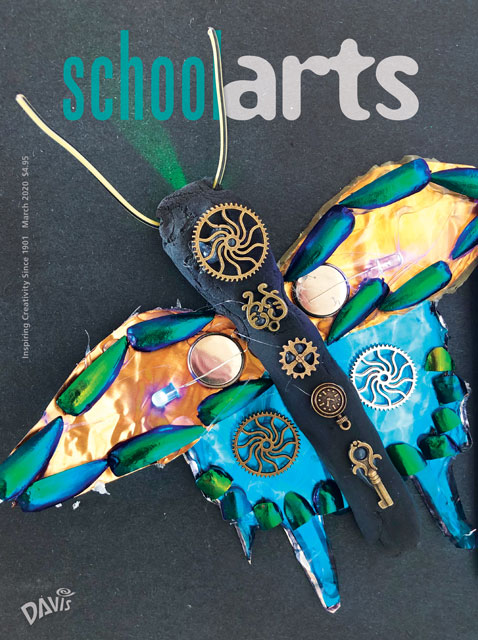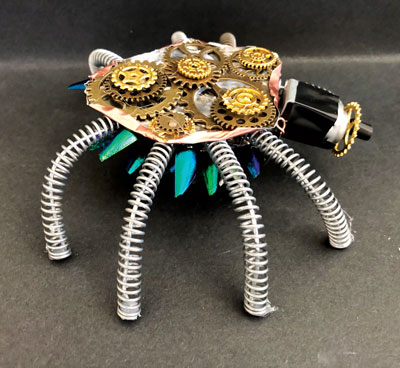 |
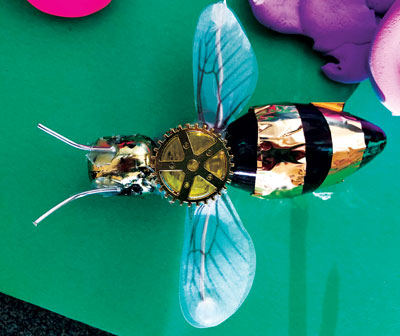 |
| Top: Lilah F., grade four. Bottom: Zayda B., grade five. |
I thought this would be a wonderful lesson to incorporate elements of STEAM. And what better way to inspire my young artists than to pair them up with science students?
Grant Inspiration
I paired up with one of our school’s science teachers, Sarah Allard, to research this idea further. We received a grant from the Virginia Education Foundation that allowed her science class and my gifted art students to work together to create steampunk-inspired insects. Each gifted art student would be paired with two science apprentices. The science students would assist with the research, making the pieces light up, and also assist with movement. The art student would assist with the mechanics of making the insects. The young artist would educate the science students on the proper use of materials, safety, creative aspect, and three-dimensional properties, thus creating a powerhouse of a team!
Each team member in each group worked together extremely well in dividing and achieving their tasks. After constructing their insect, each group designed a habitat for their insect that was also steampunk inspired.
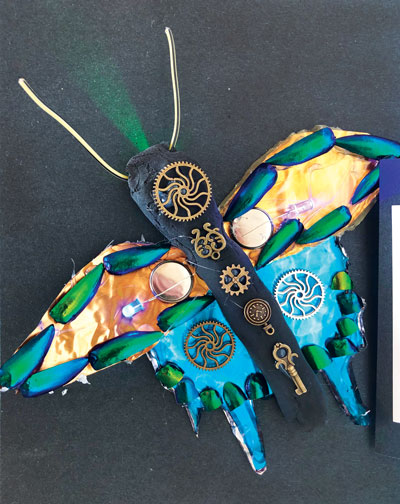 |
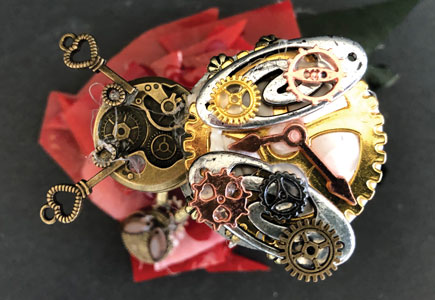 |
| Top: Isabella S., grade five. Bottom: Jonathan C., grade four. |
Brainstorming an Insect
After receiving the funds for the grant, I began to purchase anything that looked mechanical—from metal pieces, nuts, bolts, washers, and wire, to gears and clock parts. Students met once a week for a little over a month to brainstorm ideas and work on their project. We utilized our school’s library, digital sources, and other resources to gather information about each team’s insect. Each group researched various facts about their chosen insect, such as where it can be found and what it eats. Students then came up with an anatomy sketch of the insect. Each group walked to the back of the classroom to look at the different materials that were available for them to work with and came up with detailed sketches of what their steampunk insect would look like.
Constructing 3D Forms
The next week when students came in, we discussed that it would be okay for them to change their idea from the initial drawings they had done, because sometimes 2D drawings don’t always transfer well into 3D. The teams of three began constructing their bugs and instantly blew us away with their pieces. Students made their insects light up and move with ease through the use of circuits, and their designs were absolutely beautiful!
Conclusion
After the pieces were completed, students presented their designs to the group who had funded us the money through the grant, as well as to our superintendent, principal, and coordinators throughout the city. Students each tended a table with their sketches and their steampunk insects and spoke with different groups as they toured through the sea of steampunk insects. Students spoke passionately about their ideas and what their team created.
This is one of those projects that tops the list when I ask students what their favorite project was during the school year. Students use technology skills, science and research, and engineering and construction skills—and it all comes together in a work of art. To learn more about the world of steampunk, visit the Web Link below.
Leigh Drake is an NBCT visual arts teacher at Old Donation School in Virginia Beach, Virginia, and a contributing editor for SchoolArts. leigh.drake@vbschools.com
WEB L I N K
The World of Steampunk Art: emptyeasel.com/2013/05/31/theworld- of-steampunk-art/
Editor’s Note:
For a middle-school steampunk bug lesson inspired by Michele Rodin’s 2017 NAEA Convention session, see our March 2018 issue, pg. 24.
View this article in the digital edition.
